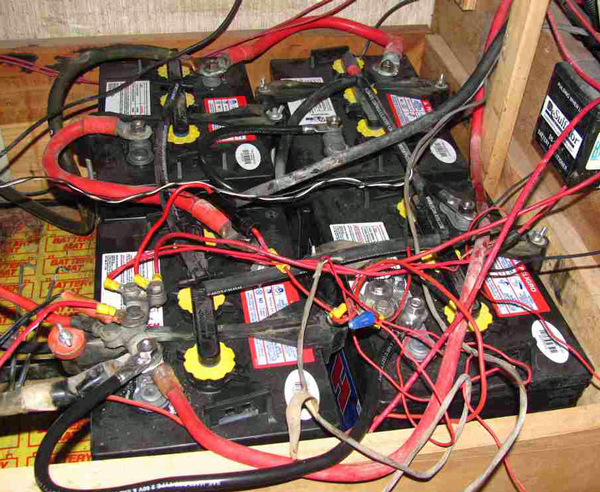 You know it's coming, the engine starts to crank a little slower, the house battery bank doesn't seem to last as long and you are now only two, maybe three years into the batteries.
You know it's coming, the engine starts to crank a little slower, the house battery bank doesn't seem to last as long and you are now only two, maybe three years into the batteries.
Cruisers are by far the biggest abuser of batteries because they typically do not fully recharged them except when they use the iron jib for excessive times of 8 to 10 hours. This typically makes the onboard crew very annoyed from the noise, smell and vibration and let's not forget the cost of fuel. It's not comfortable, practical or effective.
The inevitable will happen soon, the batteries will need to be replaced. You know it in your “gut”.
Here's the quick set of recommendations.
How the problem be solved (this is typical for flooded or AGM type batteries) is simple, just bring to batteries to full 100% charge and keep them topped off until needed. Batteries are funny animals they take time to receive a charge, hungry at first (this stage is called "bulk" charge) they grab almost as much energy as can be thrown at them until about 85% charge is achieved and then the batteries need to slowly absorb the balance of the charge (this stage is called "absorption" charge) which requires several hours of charge time regardless of the overcapacity of the charging source.
Keep in mind the daily maximum depth of discharge should not exceed 50% (always check the battery manufacturers for exact specifications/ recommendations). Most cruisers are well aware of this bottom limit and respect it. The problem is on the charging side of things. To get the batteries back up from 50% to 85% can be done relatively quickly by running the drive engines or on board generator.
But do most run their engines for 6 to 8 hours needed to get to 100%?
Probably not! Most of the time engines run 3 to 4 hours bringing the batteries up to 85 or maybe 90% charge. And so the cycle begins the next day with a repeat of discharge to 50% from an inadequate recharge. The battery bank is heading to a premature death.
When the boat is tied up at the dock with shore power and a battery charger active, the charger has the ability, over 24+ hours, to recharge the battery to 100% (provided the battery charger is large enough to overcome the onboard loads and is adjusted to the proper charge level). So the problem typically is on boats used during cruising or when tied up on a mooring.
In the later case, the solution is simple, utilize a charging source that can patiently recharge your batteries to full 100% charge and then keep them correctly topped off. The most practical solution is to use a renewable energy source such as a wind generator or solar PV panels. The best solution is dictated by your geographical location, budget and personal preference. Northern climates typically have good winds for recharging while near equator areas have excessive sun.
One would be quite surprised to realize that 140W of solar PV is capable of fully recharging a 400 A-Hr battery bank (with minimal loads on board). The solar works all day and quietly operates in the background pumping low amounts of energy into the battery bank and bring it up to that happy 100% charge. Larger renewable energy systems can quickly recharge house battery bank’s eliminating the need to run the engines unless weather conditions limit their production capabilities.
You don't have to be a cruising sailor to abuse your battery. Power Boaters are equally as offensive by letting their boats sit idle at the docks or on a trailer for days or weeks at a time while the battery slowly discharges (due to its own internal resistance). The addition of a single small solar panel (6-20W) can extend that battery life 2+ years and assuring that nice solid cranking sound when it is time to start your boating adventure.